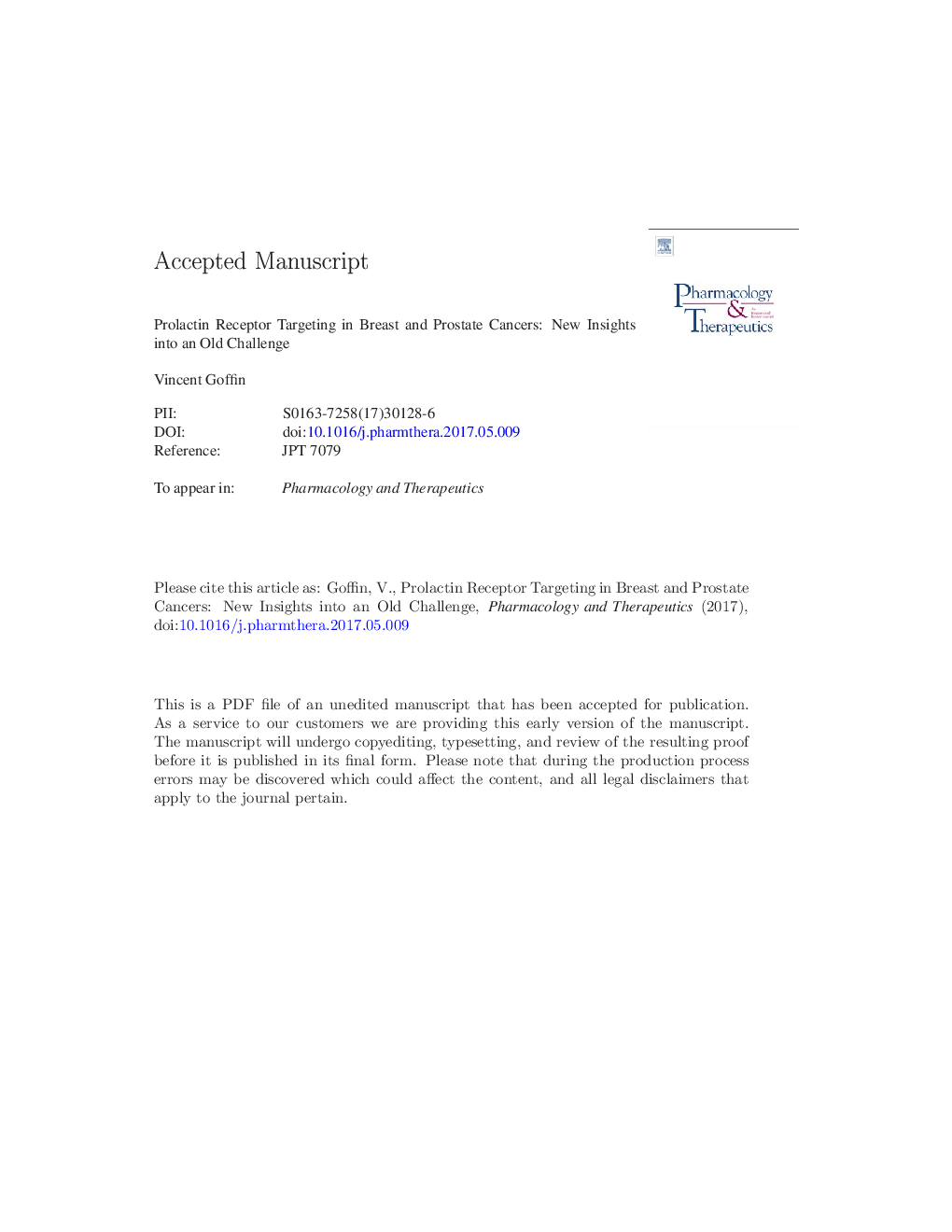| Article ID | Journal | Published Year | Pages | File Type |
|---|---|---|---|---|
| 8537026 | Pharmacology & Therapeutics | 2017 | 59 Pages |
Abstract
In the era of precision medicine, the identification of new targets is a constant challenge to improve cancer therapy. Preclinical investigations, epidemiological studies and analyses of tissue specimens from patients strongly support the contribution of prolactin receptor (PRLR) signaling to breast and prostate tumorigenesis and cancer progression. Although a clear causative link with mutations of the genes encoding prolactin or its receptor is lacking, increased PRLR signaling in these cancers can be assessed by the overexpression of cognate proteins and is often confirmed by over-activation of downstream signaling effectors. Nevertheless, the PRLR neutralizing antibody LFA102 tested recently in a Phase I trial in advanced, PRLR-positive prostate cancer and breast cancer patients failed to provide any clinical benefit. This underlines the need to better understand the actual impact of PRLR signaling on the progression of these cancers. Canonical PRLR-triggered signaling cascades include STAT5A/B, ERK1/2, PI3K/Akt, FAK and Src family kinases. Recent studies suggested that the nature and the outcome of PRLR signaling might be markedly different in breast than in prostate cancer. In the latter, like in many organs, PRLR/STAT5 signaling acts as a pro-tumorigenic pathway. In particular, it promotes the amplification of treatment-resistant prostate stem/progenitor cells, predicts early cancer recurrence and favors metastatic dissemination. In contrast, PRLR/STAT5 signaling was recently proposed to prevent breast cancer cell dissemination and to predict favorable clinical outcomes. While there is no evidence that pathways other than STAT5 are activated by prolactin in the prostate, these alternate signaling cascades may be primarily responsible for the pro-tumorigenic effects of prolactin in breast cancer. If these conclusions are confirmed in future studies, the therapeutic targeting of PRLR signaling in breast and prostate cancer may warrant the development of organ-specific strategies.
Keywords
STAT5NHE-1PSAASOERKDMBAJAK2PRLRPRLECMTGFαSFKMMTVSERMJanus Kinase 2CRPCPDXmAbSPRMHER2ADTEGFRPI3KTNBC7,12-Dimethylbenz[a]anthraceneSrc family kinasesNa+/H+ exchanger 1antisense oligonucleotidePatient-derived xenograftSTATProstate specific antigentransforming growth factor alphaTRAMPEMTandrogen deprivation therapyTargeted therapyCastration-resistant prostate cancerTriple-negative breast cancerProbasinStem/progenitor cellscytokeratinCancer relapsephosphoinositide 3-kinaseLarExtracellular matrixSignal transducer and activator of transcriptionSelective estrogen receptor modulatorProstate intraepithelial neoplasiaGrowth hormoneMouse mammary tumor virusMonoclonal antibodiesProlactinPINextracellular signal-regulated kinaseepithelial-to-mesenchymal transitionAndrogen ReceptorEstrogen receptorEpidermal growth factor receptorprolactin receptor
Related Topics
Health Sciences
Pharmacology, Toxicology and Pharmaceutical Science
Pharmacology
Authors
Vincent Goffin,
